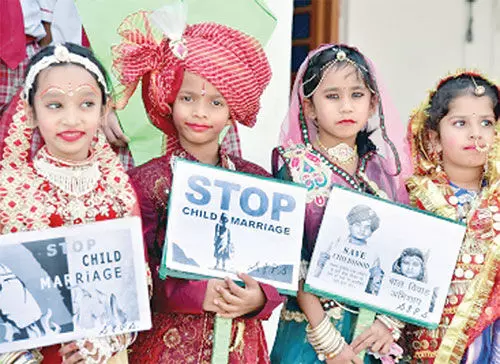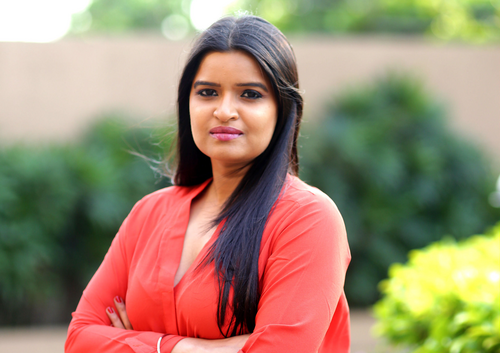End child marriage
Child marriage in India is a social evil that continues to thrive; the implementation of the ban has to be stringent and speedy

The thing about existing in a bubble is that while it can protect you from the vagaries of the world outside…that bubble often pops! There are many ‘Indias’ within this vast nation of ours that can bewilder the mind. And us, human beings, are so caught up racing the daily sprint that we seldom notice. Even for some of us, who claim to be social observers and commentators, some occurrences come as a rude shock. For me that sobering effect happened a few weeks ago when I read a Supreme Court decision refusing to extend child marriage ban to all faiths.
Now wait a minute, child marriage is still happening in India? It’s soon to be 2025! Are you kidding me? Nope. And I’m ashamed to admit what I, and many like me, have taken for granted, has long been a losing battle for lakhs of minor girls.
A little digging unveils depressing numbers — three girls are coerced into child marriage every minute! But the national crime records don’t reflect it, proving that a scant number of cases get reported. According to a report by India Child Protection, in 2022, of the 3,563 cases of child marriage, only 181 trials were successfully concluded. This showed a case pendency rate of 92 per cent and conviction rate of a mere 11 per cent. The India Child Protection research team assessed from the Census 2011 data that as much as 16 lakh child marriages take place every year. Now remember, we don’t have the latest Census, therefore, these numbers, especially post-pandemic, could be even more disheartening. Meanwhile, the central government says child marriages have halved from 47.4 per cent to 23.3 per cent in 2019-21 and 2 lakh child marriages were thwarted in the last year. But even now 1 in 5 girl children are married off before reaching legal age. If we go even by these stats disclosed by the government, the picture is dreary to say the least.
A new documentary, ‘Kicking Balls’ produced by Guneet Monga and directed by Vijayeta Kumar has an explosive teaser. UNICEF reports that India has the highest number of child brides in the world — over 1.5 crores. What follows are heartrending snippets of young girls talking about being married off at 6 years of age, some as young as 2-3 months. The background score by Alokananda Dasgupta starts slow and picks up pace along with the teaser telling a tale of hope, freedom, and a pertinacious resistance to abusive practices. The documentary highlights the journey of young girls in Rajasthan, who are fighting patriarchy through football. This story, first reported by the Thomson Reuters Foundation in 2020, is one of courage, women empowerment, and a quiet revolution led by not-for-profit organisation, Mahila Jan Adhikar Samiti (MJAS), the Girls Not Brides Rajasthan Alliance, and the brave girls of Ajmer since 1996.
And while this is a positive movement, what gets my goat (or should I say cow?) is that we can have a beef ban impeccably plastered across states but can’t proscribe child marriage? We are still allowing young girls to be married off, often to men several years older, only to be abused, raped, and tortured. Minor boys too bear the brunt of financial and mental pressures. How are we letting this retrograde practice continue?
The Prohibition of Child Marriage Act (PCMA) was promulgated in 2006, that criminalises marriage of boys under 21 years of age and girls under 18 years of age. But legal loopholes, lack of stringent enforcement, and social customs, have ensured that the regressive practice has continued and thrived in the country. The Prohibition of Child Marriage (Amendment) Bill was introduced on December 21, 2021 and was referred to a Parliamentary Standing Committee to reinforce the PCMA’s overriding effect over personal laws. In October, the Supreme Court declined to extend the ban to all religions, urging the government to instead pass it in the Parliament where it’s awaiting consideration and “outlawing child betrothals”. The onus is now on the ruling coalition to get this bill passed, which frankly should pose no obstacle whatsoever.
The Centre has also suggested that two years after the bill is notified, the minimum age of marriage for women should be elevated to 21 years of age. Underscoring its sincerity to fight this social evil, the government has also launched the Bal Vivah Mukt Bharat campaign, with the aim of reducing child marriage rates to below 5 per cent in the next 5 years, and focussing on seven critical states such as West Bengal, Bihar, Jharkhand, Rajasthan, Tripura, Assam, and Andhra Pradesh and about 300 crucial districts. More than 11.5 lakh children across 27 states and 7 Union Territories in India are vulnerable to child marriage. As per a report by the National Commission of Child Protection (NCPR), Uttar Pradesh leads with over 5 lakh vulnerable children followed by Assam (1.5 lakh), and Madhya Pradesh (almost 1 lakh). These kids have already dropped out of school and/or are absent or irregular; their future hangs in the balance if we don’t get our act together.
The writer is an author and media entrepreneur. Views expressed are personal



